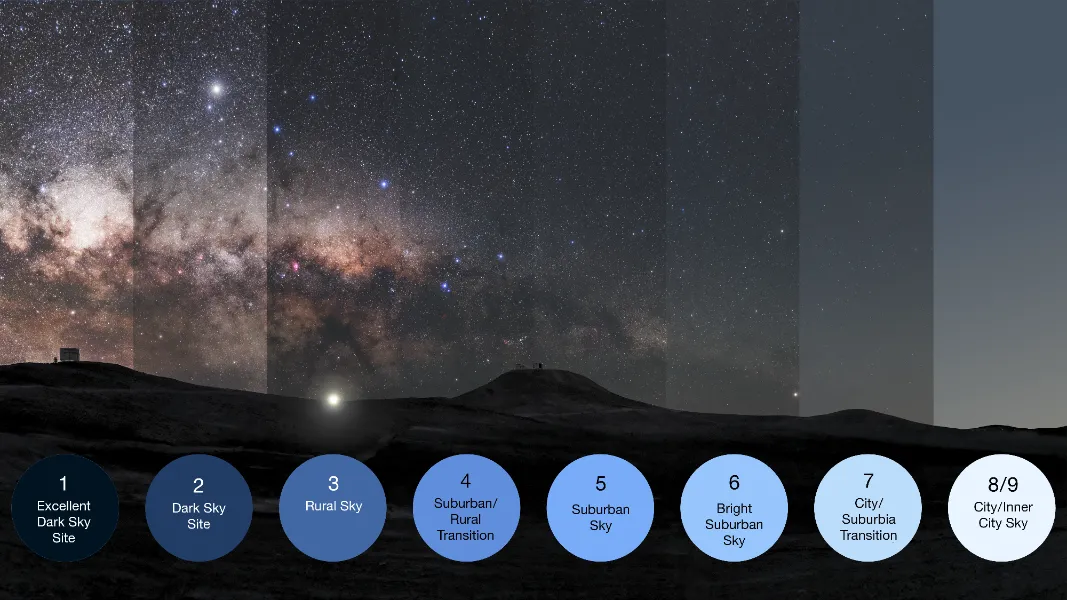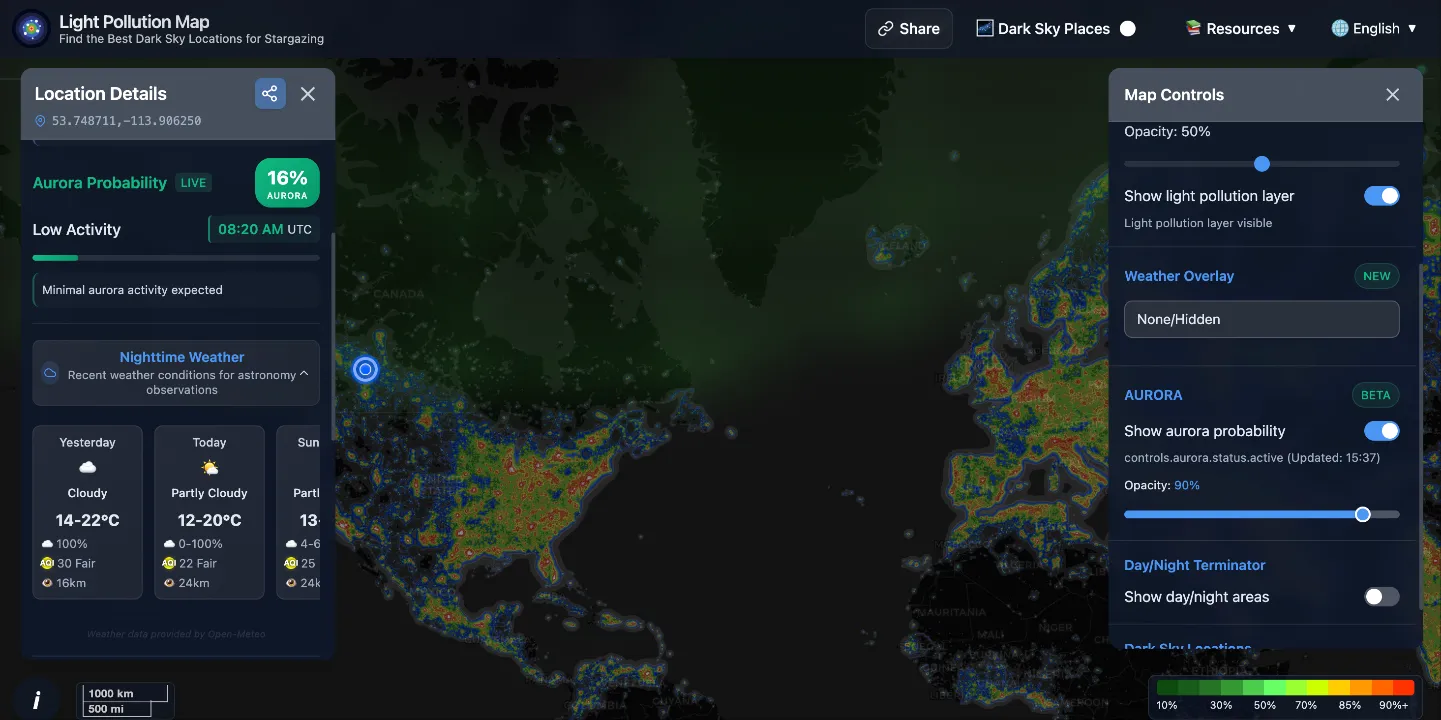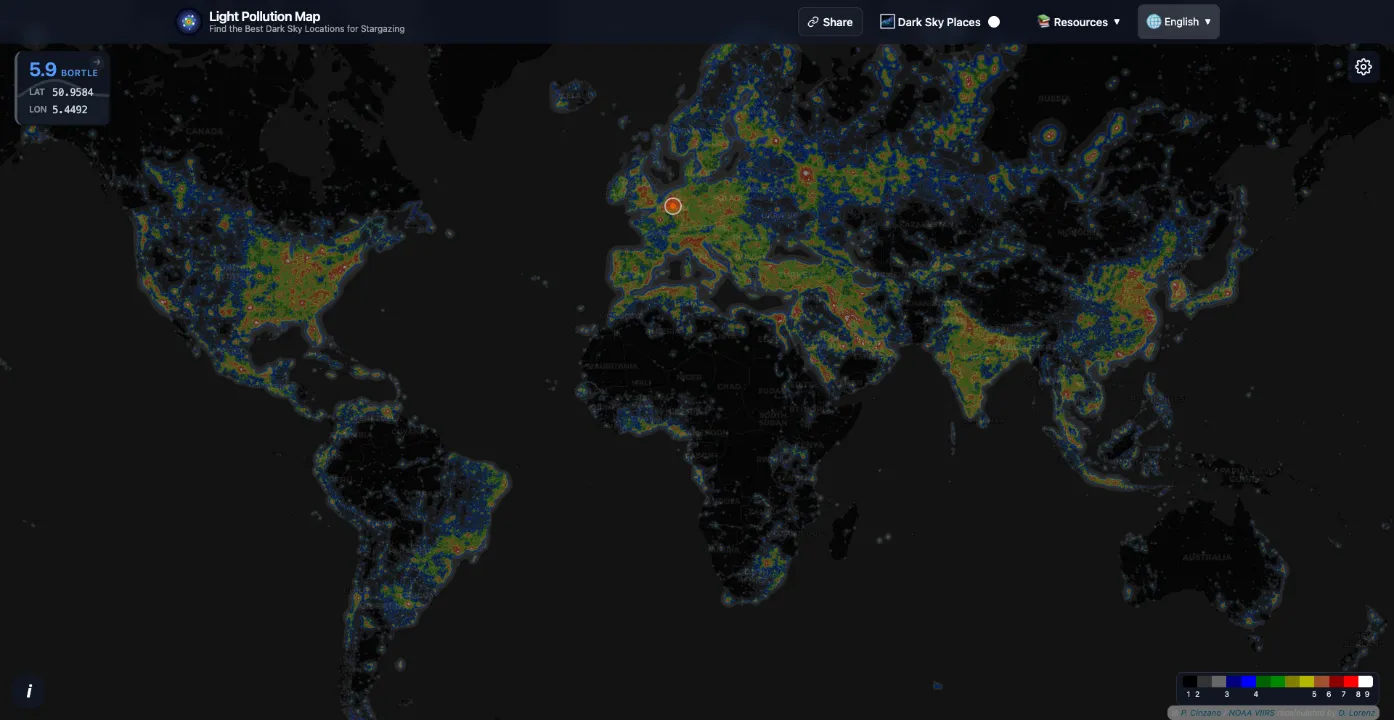地圖上的「波特爾等級」是什麼意思?如何解讀?

「波特爾等級」是衡量夜空黑暗程度的標準,從第1級(極暗)到第9級(光害最嚴重)。等級數值越小,代表可見的星星越多。本地圖使用顏色編碼,幫助你快速判斷任何地點的天空黑暗程度。
根據光害條件計算天文攝影的等效曝光時間。
搜尋中...
正在分析夜空亮度...
--
--
--%
--
⚠️ 僅為粗略估算(誤差±1-2個Bortle等級)。結果受相機自動曝光、ISO、伽瑪校正等影響,無法替代專業SQM測量儀。
自然夜空
鄉村天空
郊區天空
城市天空
市中心
預期極光活動極少
在暗空條件下可能看到極光
預期強烈極光活動
絕佳極光觀測條件


我們的系統根據您的 IP 地址分析您的大概位置,並自動顯示該區域的波特爾等級。您也可以搜尋特定地址或手動探索地圖,發現其他地區的最佳觀星點。

我們正在整合即時極光預測工具(如 KP 指數)和觀測圖層到我們的地圖中。這將幫助北歐、加拿大和阿拉斯加等高緯度地區的用戶追蹤和追尋極光觀測。
當然可以!地圖結合光害水平和地理數據,幫助您找到銀河觀測和攝影的理想地點。我們也計劃添加銀河升起時間和方向等功能,支援天文攝影師有效規劃拍攝。

https://lightpollutionmap.app/?lat=25.3125&lng=-80.6875&zoom=8。用於分享位置或儲存最愛觀星點。只需調整緯度(lat)、經度(lng)與縮放層級。我們計劃建立觀星愛好者社群,用戶可以上傳實地觀測報告、照片和建議。這將豐富我們的地圖數據,讓用戶分享觀測經驗。
我們網站的基本功能永久免費使用。目前我們沒有會員制計劃,您可以放心使用我們的光害地圖。
地圖幫助觀星者快速找到附近合適的觀測地點,並提供波特爾等級資訊和基本天文指導。我們計劃在未來擴展初學者教程和觀測建議,幫助您輕鬆開始觀星之旅。
幫助提高對光害的認識!與朋友和家人分享此地圖,展示光害如何影響我們的夜空。
在您的網站上嵌入此互動式光害地圖。嵌入代碼會保留當前位置、縮放級別和活動圖層。